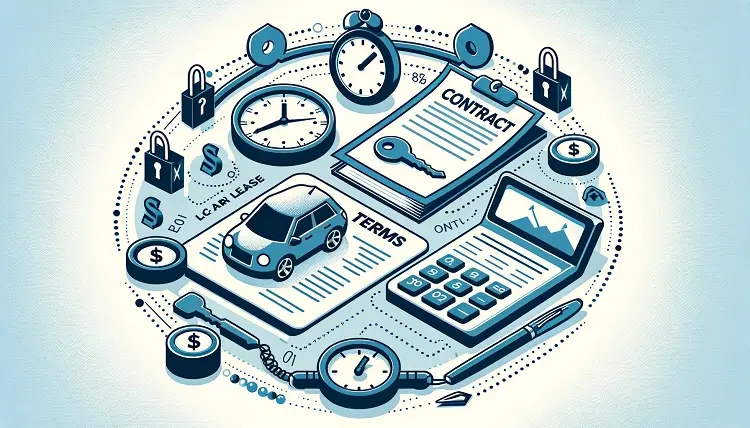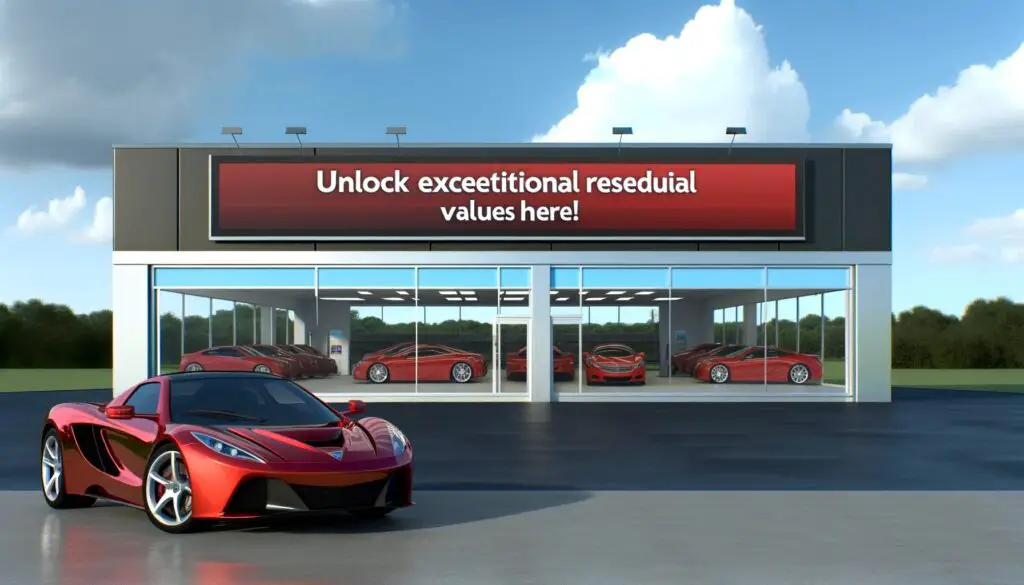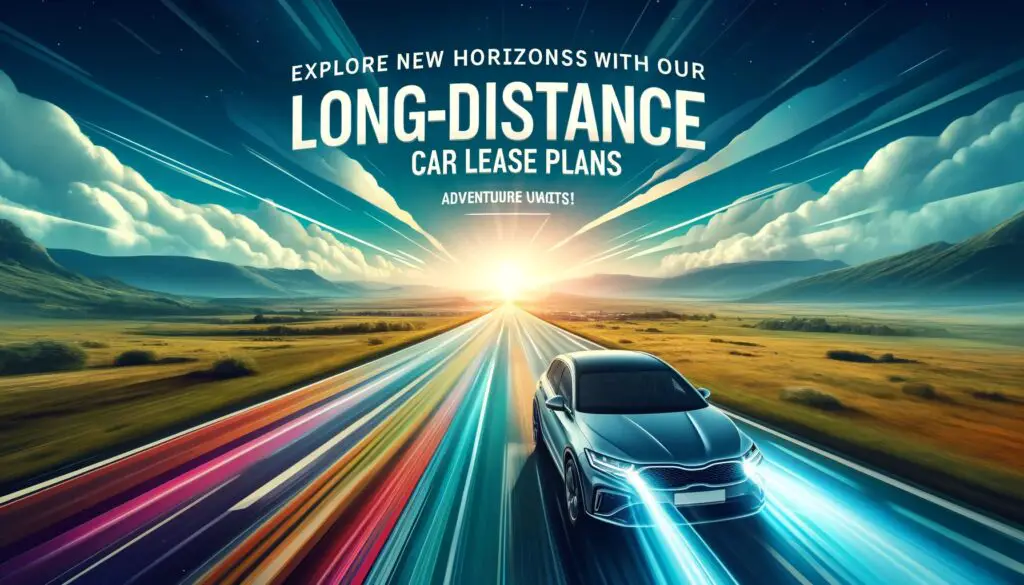In this comprehensive guide, we delve into the world of car leases, providing you with a detailed understanding of this popular financing option. Whether you’re a first-time car leaser or looking to renew your lease, our in-depth exploration will equip you with the knowledge needed to make informed decisions and ensure a successful car leasing experience.
Introduction to Car Leases
Definition of Car Leasing
Car leasing, also known as a vehicle lease, is a contractual agreement that allows you to use a car for a specified period, typically 2-3 years, in exchange for monthly payments. Unlike traditional car ownership, where you own the vehicle outright, leasing enables you to enjoy the benefits of a new car without the long-term commitment.
Brief History of Car Leasing
The history of car leasing dates back to the early 20th century, with the concept gaining popularity in the post-World War II era. Automotive manufacturers and dealerships began offering lease options to attract customers looking for affordable and flexible ways to drive new vehicles.
Why Choose Car Leasing?
Car leasing offers several advantages, making it an attractive choice for many consumers. Some of the key reasons to choose car leasing include:
- Lower Monthly Payments: One of the primary attractions of car leasing is the lower monthly payments. When you lease a car, you’re essentially paying for the vehicle’s depreciation during the lease term, rather than its full purchase price. This results in more manageable monthly expenses, making it an appealing option for those looking to stay within a specific budget.
- Warranty Coverage: Car manufacturers typically include warranty coverage in lease agreements. This warranty often covers the duration of the lease, which means that most repair and maintenance costs are taken care of by the manufacturer. This aspect offers significant peace of mind to lessees, as they won’t have to worry about unexpected expenses related to vehicle repairs.
- Newer Cars: Car leasing allows you to regularly drive newer vehicles. Lease terms are usually short, typically lasting 2-3 years. As a result, you can frequently upgrade to the latest car models with advanced features, improved fuel efficiency, and enhanced safety technologies. This means you’ll enjoy driving a modern, up-to-date vehicle without the long-term commitment associated with ownership.
- No Depreciation Concerns: One of the key advantages of leasing is that you don’t need to concern yourself with the depreciation of the car’s value. Unlike owning a vehicle, where its resale value is your responsibility, when you lease, you return the car at the end of the lease term, and any depreciation is absorbed by the leasing company. This can be especially beneficial if you’re concerned about the potential depreciation of a vehicle over time.
Types of Car Leases
Car leases come in various forms, each with its own terms and conditions. Understanding the types of leases available is crucial when deciding which one suits your needs.
1. Closed-End Leases:
A closed-end lease, often referred to as a “walk-away” lease, is the most common type of car lease. In this type of lease agreement:
- Specific Terms: Closed-end leases set specific terms, including the duration of the lease (typically 2-3 years) and mileage limits. These terms are agreed upon at the beginning of the lease.
- Return Option: At the end of the lease term, you have the option to return the car to the leasing company. As long as you’ve adhered to the contract terms, you can walk away without further financial obligations, except for any potential excess wear and tear or mileage charges.
Closed-end leases are popular among consumers looking for a straightforward and predictable leasing experience. They provide a clear understanding of the lease’s parameters and costs.
2. Open-End Leases:
Open-end leases are less common and are often used in commercial or business contexts. These leases offer more flexibility, but they also come with increased financial risk for the lessee:
- Flexibility: Open-end leases do not have strict mileage limits, and they allow lessees to use the vehicle for longer periods, making them suitable for businesses with variable transportation needs.
- Financial Risk: However, in open-end leases, the lessee may be responsible for any depreciation in the car’s value when it’s returned. If the vehicle’s actual value at the end of the lease is less than the estimated residual value, the lessee may need to cover the difference.
Open-end leases are typically chosen by businesses that require flexible leasing arrangements and have the financial means to handle potential depreciation costs.
3. Single-Payment Leases:
Single-payment leases are unique in that they involve a single, upfront payment of the entire lease amount:
- One-Time Payment: Instead of making monthly payments, lessees pay the full lease amount upfront, covering the entire duration of the lease.
- No Monthly Obligations: With single-payment leases, there are no ongoing monthly financial commitments, making it a convenient option for those who can afford the substantial initial payment.
Single-payment leases are ideal for individuals or businesses with the financial capability to make a lump-sum payment and prefer to avoid monthly expenses.
4. Subvented Leases:
Subvented leases are often offered by car manufacturers or financing companies and come with special incentives or subsidies:
- Lower Lease Rates: These leases typically feature lower monthly payments compared to standard leases due to manufacturer or financing company support.
- Attractive Deals: Subvented leases can be an attractive choice for consumers looking to lease a vehicle with favorable terms and lower costs.
Subvented leases are designed to entice consumers with cost-effective lease options, making them a popular choice when manufacturers want to promote specific models or clear existing inventory.
5. Novated Leases:
Novated leases are a unique option available in some countries, particularly in employer-employee arrangements:
- Employer Involvement: In a novated lease, an employer leases a car on behalf of an employee as part of their compensation package. The lease payments are deducted from the employee’s pre-tax income.
- Portability: Novated leases may be portable, allowing employees to take the lease with them if they change jobs, although the responsibility for payments may shift.
Novated leases offer employees a tax-efficient way to access a vehicle and can be an attractive employee benefit.
In summary, understanding the various types of car leases, from closed-end leases with clear terms to open-end leases with greater flexibility and potential financial risk, empowers you to choose the lease option that aligns with your specific needs and financial situation. Whether you prioritize predictability, flexibility, or upfront costs, there’s a car lease type to suit your requirements.
Pros and Cons of Car Leasing
Before entering a car lease agreement, it’s essential to weigh the pros and cons carefully.
Advantages
- Lower Monthly Payments: Leasing often results in lower monthly costs compared to purchasing a car.
- Warranty Coverage: Manufacturer warranties usually cover lease vehicles, reducing repair expenses.
- Newer Cars: Leasing allows you to drive the latest car models with advanced features.
- No Depreciation Concerns: You’re not responsible for the car’s depreciation in value, as you return it at the end of the lease.
Disadvantages
- Mileage Restrictions: Lease agreements typically include mileage limits, and exceeding them can incur additional charges.
- Ownership vs. Leasing: You don’t own the car at the end of the lease, which means you have no equity in the vehicle.
- Upfront Costs: Some leases require a down payment, security deposit, and other upfront fees.
- End-of-Lease Expenses: Returning the car may involve additional costs, such as excess wear and tear charges.
How Car Leasing Works
Understanding the mechanics of car leasing is vital to making an informed decision.
Choosing the Right Car Lease
Selecting the appropriate lease involves considering your specific needs and preferences.
The Leasing Process
Navigating the leasing process involves several key steps.
Applying for a Lease:
Applying for a car lease is the initial step in the process. Here’s what you need to know:
- Personal and Financial Information: To complete the lease application, you’ll need to provide personal information such as your name, address, contact details, and driver’s license information. Additionally, you’ll be asked for financial information, including your income, employment details, and monthly expenses.
- Approval Process: The leasing company or dealership will review your application to assess your creditworthiness. This evaluation helps determine whether you qualify for the lease and the terms you’ll be offered. A positive credit history and stable financial situation can improve your chances of approval.
Credit Score Requirements:
Your credit score plays a significant role in lease approval and the terms you’re offered:
- Credit Score Importance: A strong credit score can lead to more favorable lease terms, such as lower interest rates, reduced security deposits, and more flexible lease conditions. Conversely, a lower credit score may result in less favorable terms or even lease denial.
- Credit Check: During the application process, the leasing company will perform a credit check to assess your creditworthiness. It’s crucial to maintain good credit habits and regularly check your credit report for accuracy.
- Credit Improvement: If your credit score is lower than desired, consider taking steps to improve it before applying for a lease. This may involve paying off existing debts, correcting any errors on your credit report, and demonstrating responsible financial behavior.
Vehicle Inspection and Delivery:
Before taking possession of the leased car, a thorough inspection is conducted to document its condition:
- Inspection Process: A representative from the leasing company or dealership will inspect the vehicle to assess its condition and ensure it meets the agreed-upon standards. Any existing damage or wear and tear will be documented.
- Walkthrough: As the lessee, you should accompany the inspector during the walkthrough to verify the accuracy of the inspection report. This process helps protect you from being held responsible for pre-existing damage when returning the vehicle.
- Documentation: It’s essential to keep a copy of the inspection report for your records. This document serves as evidence of the car’s condition at the beginning of the lease and can be used to dispute any discrepancies during lease-end inspections.
Signing the Lease Agreement:
Reviewing and signing the lease agreement is a critical step in the process:
- Understanding Terms and Conditions: Carefully read and understand all terms and conditions outlined in the lease agreement. This document specifies the lease duration, monthly payments, mileage limits, and any additional fees or charges.
- Clarify Any Questions: If you have any questions or concerns about the lease terms, don’t hesitate to ask for clarification from the leasing company or dealership. It’s essential to have a clear understanding of your obligations and rights as a lessee.
- Compliance: Ensure that you can comply with all the terms and conditions outlined in the lease agreement before signing. Once you sign, you are legally bound by the terms of the lease.
In summary, the leasing process involves applying for a lease by providing personal and financial information, understanding the importance of your credit score, conducting a thorough vehicle inspection, and carefully reviewing and signing the lease agreement. Each step is essential in ensuring a smooth and successful car leasing experience.
Making Payments and Maintenance
Ongoing responsibilities during the lease term include monthly payments, maintenance, and insurance.
Mileage Restrictions and Overages
Mileage limitations are a critical aspect of lease agreements.
Early Termination and Lease Transfer
Sometimes, circumstances change, and you may need to terminate your lease early or transfer it to someone else.
End of Lease Options
As your lease term approaches its end, you’ll need to decide what to do next.
Frequently Asked Questions (FAQs)
1. What is the difference between leasing and financing?
- Leasing involves renting a car for a set period, while financing is a loan to purchase a car outright.
2. Can I negotiate the terms of a car lease?
- Yes, you can negotiate various aspects of a car lease, including the monthly payment, mileage limit, and down payment.
3. What happens if I exceed my mileage limit?
- Exceeding your mileage limit typically results in additional charges per mile driven.
4. Is it possible to lease a used car?
- Yes, it’s possible to lease a used car, but it’s less common than leasing new vehicles.
5. What factors affect the monthly lease payment?
- Monthly lease payments are influenced by factors such as the car’s initial price, depreciation rate, interest rate, and lease term.
6. Can I modify a leased car?
- Modifications to leased cars may be allowed, but they must typically be reversible, and you should consult your lease agreement.
7. How does insurance work for leased vehicles?
- Leased vehicles often require comprehensive insurance coverage, including collision and liability.
8. Are there tax benefits to leasing a car?
- In some cases, leasing a car may offer tax benefits, such as deductions for business use, but it’s essential to consult a tax professional.
9. What are common lease-end charges?
- Common lease-end charges include excess wear and tear fees, mileage overage charges, and any outstanding payments.
Tips for a Successful Car Leasing Experience
Ensure a smooth and satisfying car leasing experience with these valuable tips.
1. Research Thoroughly:
- Take the time to thoroughly research various car models, lease terms, and dealerships. Compare different options and consider your specific needs and budget before making a decision.
2. Understand the Fine Print:
- Before signing a lease agreement, read and fully understand every detail, including the terms, fees, and your responsibilities as a lessee. Seek clarification on any unclear points to avoid surprises later.
3. Keep Up with Maintenance:
- Regular maintenance is crucial to keep the leased car in good condition. Follow the manufacturer’s recommended maintenance schedule for oil changes, tire rotations, and inspections. Proper maintenance helps prevent excess wear and tear charges at lease-end.
4. Be Mindful of Mileage:
- Monitor your mileage throughout the lease term to ensure you stay within the agreed-upon limit. Exceeding the mileage limit can result in additional charges, so plan your driving accordingly.
5. Consider Long-Term Costs:
- While monthly lease payments may be lower than financing a car, consider the long-term financial implications. Factor in potential end-of-lease expenses, such as excess wear and tear charges or mileage overage fees, to make an informed decision about your lease.
By following these tips, you can navigate the car leasing process more effectively, make informed choices, and have a satisfying and cost-effective leasing experience.
Conclusion
In conclusion, car leasing is a flexible and cost-effective way to enjoy the benefits of a new vehicle without the commitment of ownership. Understanding the intricacies of car leases, from the types available to the leasing process and end-of-lease options, empowers you to make informed decisions. Whether you’re looking for lower monthly payments, access to newer cars, or the convenience of a hassle-free warranty, car leasing offers numerous advantages. By following our tips and guidelines, you can ensure a successful car leasing experience and drive with confidence.





